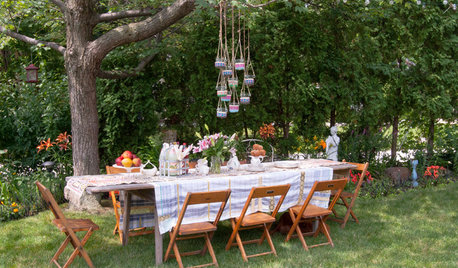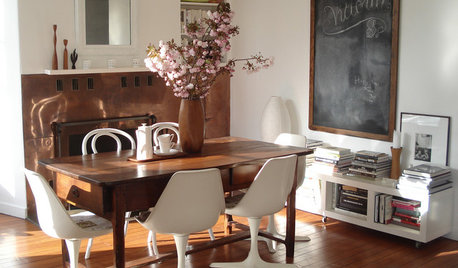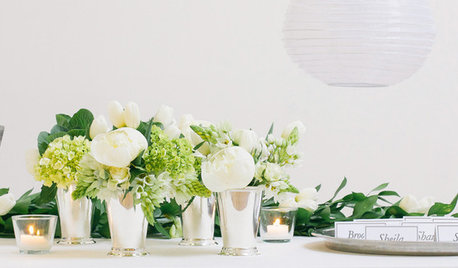bridal crown
ninebulan
15 years ago
Related Stories

ENTERTAININGHow to Host a Tea Party at Home
Many people are reacquainting themselves with the gracious British ritual, steeped in tradition, that is perfect for an outdoor gathering
Full Story
WINDOW TREATMENTSHow Low Should Your Drapes Go?
Hover, brush the floor or pool like Scarlett O'Hara's tears — we give you the lowdown on curtain length options
Full Story
GARDENING GUIDESMeet the Mighty Saguaro of the Desert Landscape
You’ve seen its form in films, on souvenirs and much more. Now get to know this iconic cactus of the Sonoran Desert
Full Story
DECORATING GUIDESVintage Modern: What Does It Mean?
Objects With History Warm Up Clean Lines in Fresh, Eclectic Interiors
Full Story
COLOR11 Terrific Paint Color Matches for Wood Details
Pair your wood trim and cabinets with the right shade of wall paint to bring out the beauty in both
Full Story
GARDENING GUIDESWhat Kind of Roses Should You Grow?
Want to add the beauty of roses to your garden? Find out which ones, from old-fashioned to modern, are right for you
Full Story
SHOP HOUZZHouzz Products: It's Celebration Season!
Make an outdoor reception or shower memorable with pretty tableware, accessories and flexible furnishings
Full StorySponsored
Central Ohio's Trusted Home Remodeler Specializing in Kitchens & Baths
More Discussions







ontnative
vetivert8
Related Professionals
Ballenger Creek Landscape Architects & Landscape Designers · Barrington Hills Landscape Architects & Landscape Designers · Brentwood Landscape Architects & Landscape Designers · Garden City Landscape Architects & Landscape Designers · Zion Landscape Architects & Landscape Designers · Burlington Landscape Contractors · Bellefontaine Neighbors Landscape Contractors · Bristol Landscape Contractors · Hollywood Landscape Contractors · Lees Summit Landscape Contractors · Middleton Landscape Contractors · Miller Place Landscape Contractors · Pahrump Landscape Contractors · San Pedro Landscape Contractors · Ferguson Landscape Contractors